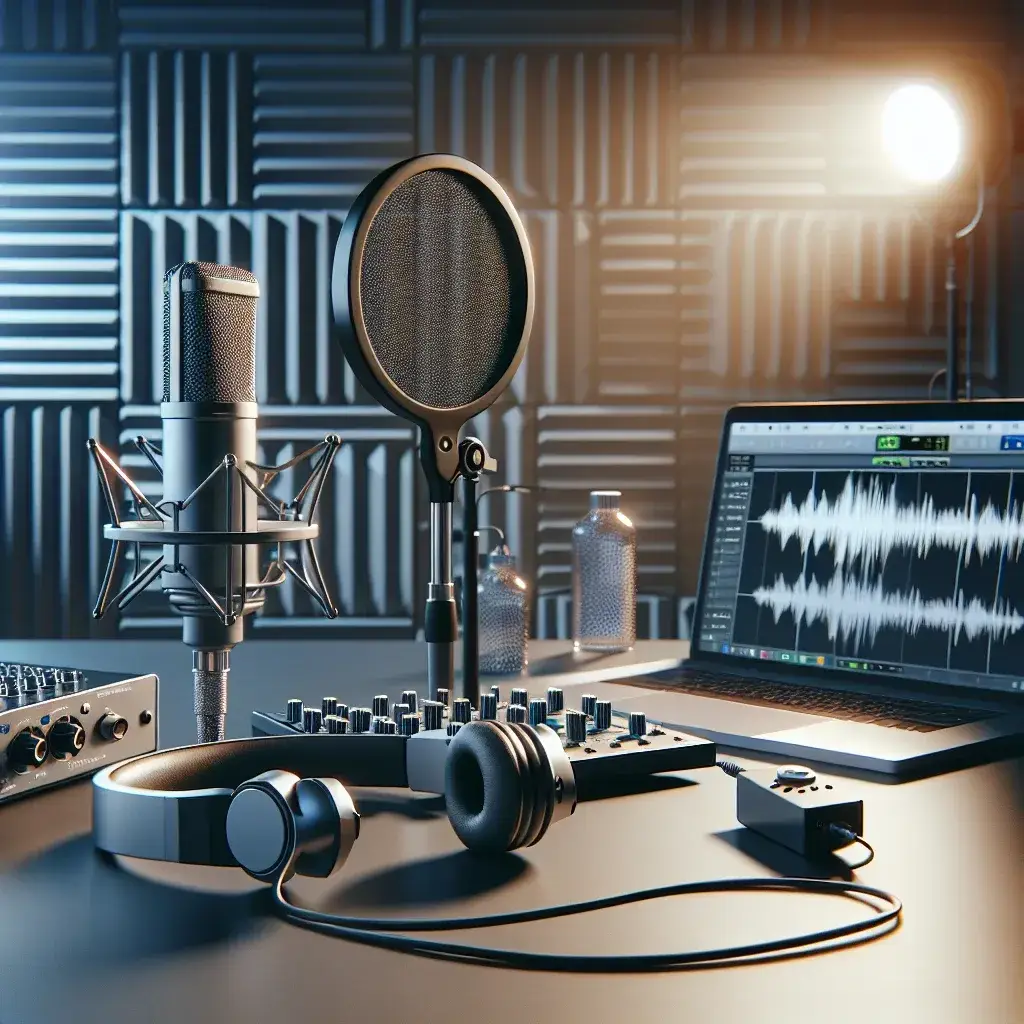The Foundation of Professional Video Production
In the realm of video production, audio quality often determines the difference between amateur and professional content. While viewers might forgive slightly imperfect visuals, poor audio quality can instantly drive them away from your content. Recording clean audio for video requires understanding both technical fundamentals and practical implementation strategies that work across various recording environments.
Understanding Audio Fundamentals for Video
Before diving into equipment and techniques, it’s crucial to understand what constitutes “clean” audio. Clean audio exhibits minimal background noise, consistent volume levels, clear vocal articulation, and absence of distortion or unwanted frequencies. The human ear is remarkably sensitive to audio imperfections, making it essential to prioritize sound quality from the initial recording phase rather than relying solely on post-production fixes.
The Science Behind Sound Recording
Sound waves travel through air as vibrations, and microphones convert these mechanical vibrations into electrical signals. The quality of this conversion process significantly impacts your final audio output. Understanding frequency response, dynamic range, and signal-to-noise ratio helps you make informed decisions about recording techniques and equipment selection.
Essential Equipment for Clean Audio Recording
Microphone Selection Strategies
The microphone serves as your primary tool for capturing clean audio. Different microphone types excel in specific recording scenarios:
- Lavalier Microphones: Ideal for interviews and presentations, offering hands-free operation and consistent audio levels
- Shotgun Microphones: Perfect for directional recording, effectively isolating subject audio from ambient noise
- Dynamic Microphones: Excellent for high-volume environments and outdoor recording situations
- Condenser Microphones: Provide superior sensitivity and frequency response for controlled studio environments
Audio Recording Devices and Interfaces
Professional audio recorders offer superior preamps, better analog-to-digital conversion, and more precise gain control compared to camera-mounted recording systems. External recorders like the Zoom H5 or Sound Devices MixPre series provide professional-grade recording capabilities while maintaining portability for field recording scenarios.
Room Acoustics and Environmental Considerations
The recording environment significantly influences audio quality, often more than equipment selection. Hard surfaces create reflections and reverberation, while soft materials absorb sound waves, reducing unwanted echoes and ambient noise.
Acoustic Treatment Solutions
Implementing proper acoustic treatment doesn’t require expensive studio construction. Strategic placement of blankets, curtains, or portable acoustic panels can dramatically improve recording conditions. Recording in smaller spaces with carpet, furniture, and soft furnishings naturally provides better acoustic properties than large, empty rooms with hard surfaces.
Noise Pollution Management
Identifying and eliminating noise sources before recording saves considerable time in post-production. Common noise sources include air conditioning systems, computer fans, traffic, and electrical interference from fluorescent lighting. Creating a pre-recording checklist helps ensure consistent audio quality across multiple recording sessions.
Recording Techniques and Best Practices
Microphone Placement Principles
Proper microphone placement directly impacts audio clarity and consistency. The inverse square law dictates that doubling the distance between microphone and source reduces audio level by approximately 6 decibels. Maintaining consistent microphone-to-subject distance ensures uniform audio levels throughout your recording.
For dialogue recording, positioning the microphone 6-12 inches from the speaker’s mouth typically provides optimal results. However, this distance may vary based on microphone type, recording environment, and desired audio characteristics.
Gain Structure and Recording Levels
Establishing proper gain structure prevents distortion while maintaining adequate signal-to-noise ratio. Recording levels should peak between -12dB and -6dB, providing sufficient headroom for unexpected volume spikes while avoiding noise floor issues. Digital recording systems handle lower recording levels better than analog systems, making conservative level setting a prudent approach.
Advanced Recording Strategies
Multi-Microphone Techniques
Complex recording scenarios often benefit from multiple microphone setups. Using separate microphones for each speaker in interview situations provides greater control during post-production editing. However, multi-microphone recording requires careful attention to phase relationships and potential feedback issues.
Backup Recording Methods
Professional productions always incorporate backup recording systems. Redundant recording paths might include simultaneous recording to multiple devices, using different microphones for the same source, or employing smartphone apps as emergency backup systems. This redundancy proves invaluable when primary recording systems fail or produce unexpected results.
Post-Production Audio Enhancement
Essential Audio Editing Techniques
Even perfectly recorded audio benefits from post-production enhancement. Basic editing techniques include noise reduction, equalization, compression, and normalization. These processes refine raw audio recordings into polished, professional-sounding tracks that complement your video content.
Noise Reduction Strategies
Modern audio editing software provides sophisticated noise reduction tools. However, these tools work most effectively when applied to well-recorded source material. Aggressive noise reduction can introduce artifacts that sound worse than the original noise, emphasizing the importance of clean recording techniques.
Synchronization and Audio-Video Integration
Maintaining synchronization between audio and video elements requires attention to recording frame rates, timecode, and file formats. Professional workflows often involve recording audio separately from video, requiring precise synchronization during post-production editing.
Workflow Optimization
Developing consistent workflows streamlines the recording and post-production process. This includes standardized file naming conventions, backup procedures, and quality control checkpoints that ensure consistent results across multiple projects.
Budget-Conscious Solutions
Achieving professional audio quality doesn’t require enormous budgets. Strategic equipment purchases, DIY acoustic treatment solutions, and careful technique implementation can produce excellent results within modest budget constraints. Prioritizing essential equipment and gradually building your audio recording toolkit proves more effective than purchasing expensive equipment without understanding proper implementation techniques.
Common Mistakes and Solutions
Frequent recording mistakes include inadequate monitoring, inconsistent microphone placement, and insufficient backup planning. Learning to identify these issues during recording rather than post-production saves time and improves final audio quality. Regular equipment maintenance and calibration also prevents technical issues that compromise recording quality.
Future-Proofing Your Audio Setup
Technology continues evolving, but fundamental audio recording principles remain constant. Investing in quality microphones, developing strong recording techniques, and understanding acoustic principles provides a foundation that adapts to changing technology and production requirements.
Recording clean audio for video requires combining technical knowledge with practical experience. By understanding equipment capabilities, environmental factors, and proper recording techniques, you can consistently produce professional-quality audio that enhances your video content and engages your audience effectively.

